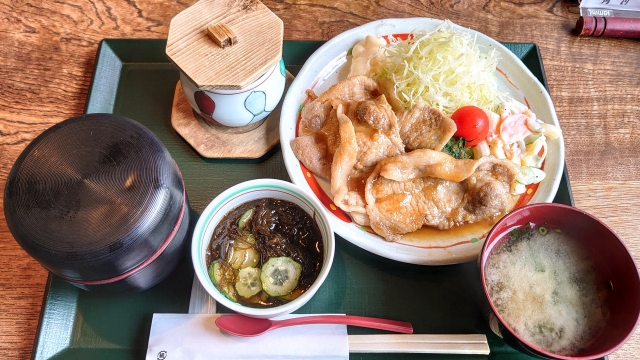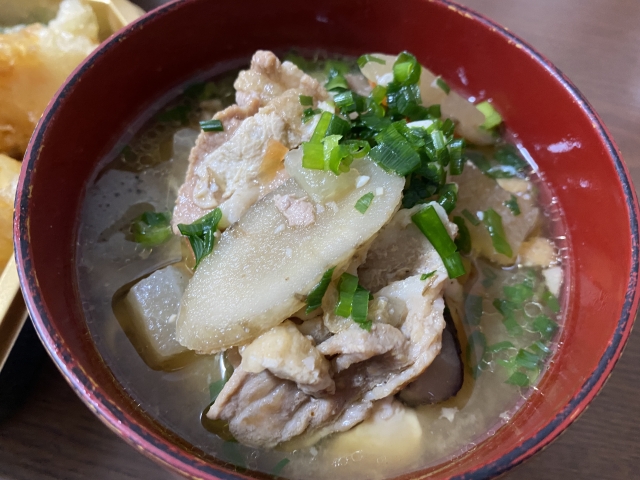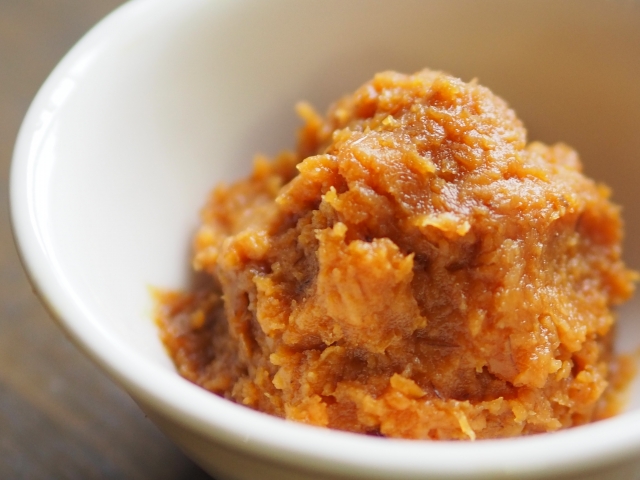
The Taste of Mother’s Home Cooking
サムネイルはしろももさんの作品で、AC写真からダウンロード
Tweetおふくろの味
言葉の意味
“The taste of mother’s home cooking or Ofukuro no aji” means taste buts developed by home cooking that people grew up with or dishes that remind the tastes people grew up with. So, everyone has their own “ofukuro no aji” with subtle differences. Generally speaking, home cooking is described as “ofukuro no aji”. People typically cook Miso soup, Nikujaga and Tamagoyaki throughout the year in Japan, I suppose.
「おふくろの味(あじ)」とは、小(ちい)さい頃(ころ)に食(た)べて育(そだ)った家庭料理(かていりょうり)や、その味(あじ)によって形成(けいせい)された味覚(みかく)、またはそれを思(おも)い出(だ)させる料理(りょうり)のことを言(い)います。ですから、人(ひと)それぞれ違(ちが)うおふくろの味(あじ)があるのですが、人(ひと)により物凄(ものすご)く違(ちが)う味(あじ)という訳(わけ)ではありません。一般的(いっぱんてき)に、家庭料理(かていりょうり)はおふくろの味(あじ)と表現(ひょうげん)されています。日本(にほん)の家庭(かてい)で、季節(きせつ)を問(と)わずよく作(つく)られる料理(りょうり)と言(い)えば、お味噌汁(みそしる)・肉(にく)じゃが・卵焼(たまごや)き、などではないでしょうか?
定番の味噌汁

People put various ingredients into miso soup. Tofu, fried bean curds, and seaweeds like wakame are usual ingredients. Other ingredients may be root and leaf vegetables, mushrooms and pork if you’d like some meat. When people make sashimi, they also put the rest of the fish, such as a head and other meatless bits, which gives extra flavour to the miso soup. In many places in Japan, people add the local produce into miso soup, which sometimes has a different name rather than miso soup.
お味噌汁(みそしる)には色々(いろいろ)な具材(ぐざい)を入(い)れます。豆腐(とうふ)・薄揚(うすあ)げ、ワカメなどの海藻(かいそう)は定番(ていばん)の具材(ぐざい)です。他(ほか)には、根菜(こんさい)・葉物野菜(はものやさい)、キノコ、お肉(にく)は豚肉(ぶたにく)が多(おお)いでしょうか。お魚(さかな)は身(み)の部分(ぶぶん)はお刺身(さしみ)で食(た)べ、骨周(ほねまわ)りの部位(ぶい)やお頭(かしら)をいれることもあります。とても美味(おい)しい出汁(だし)になります。日本各地(にほんかくち)ではその土地特有(とちとくゆう)の食材(しょくざい)を入(い)れ、名前(なまえ)も味噌汁(みそしる)ではなく違(ちが)う呼(よ)び名(な)になることもあります。
ご当地味噌汁
For instance, famous local miso soups in Hokkaido are Sanpeijiru cooked with salmon or other locally abundant fish and Teppoujiru with crab legs. This link introduces many kinds of local miso soup. It is in Japanese, but many photos are available, so non-Japanese can also enjoy the site.
例(たと)えば、北海道(ほっかいどう)で有名(ゆうめい)なご当地味噌汁(とうちみっそしる)は、鮭(さけ)や豊富(ほうふ)にある魚(さかな)を入(い)れた三平汁(さんぺいじる)、カニの足(あし)を入(い)れた鉄砲汁(てっぽうじる)などがあります。こちらのサイトには、各地(かくち)の味噌汁(みそしる)が紹介(しょうかい)されています。日本語(にほんご)のサイトになりますが、写真(しゃしん)がたくさん載(の)っていますから、見(み)るだけでも楽(たの)しめます。
味噌の種類

Miso also varies depending on the area. There are red miso, white miso and mixed miso. The amount of added salt and the duration of fermenting determine the tastes and colours of miso. Besides, the taste differs between the two types of miso with steamed rice or oats. While that is a standard procedure, there is miso without either. “Mame miso” is made from only soybeans and salt. But, I have never seen them at supermarkets because they may not be in high demand or expensive due to the time-consuming process.
場所(ばしょ)により味噌(みそ)も変(かわ)ります。味噌(みそ)には赤(あか)みそ・白(しろ)みそ・合(あ)わせみそがあります。塩加減(しおかげん)や発酵(はっこう)の長(なが)さで味(あじ)も色(いろ)も違(ちが)った味噌(みそ)になります。また、大豆(だいず)に蒸(む)した米(こめ)をいれるのか麦(むぎ)を入(い)れるのかで、味(あじ)も変(か)わります。どちらかを入(い)れるのが定番(ていばん)ですが、大豆(だいず)と塩(しお)のみで作(つく)られる「豆味噌(まめみそ)」もあります。あまり需要(じゅよう)が高(たか)くないのか、製造(せいぞう)に長時間(ちょうじかん)かかり高価(こうか)だからか、スーパーなどで販売(はんばい)されているのを見(み)た事(こと)がありません。
Some people enjoy local Japanese sake on their trips to different parts of Japan. You may want to plan your next trip to taste miso soup made of local miso and produce.
日本各地(にほんかくち)を旅行(りょこう)し地酒(じざけ)を楽(たの)しむ人(ひと)たちがいますが、各地(かくち)の味噌(みそ)と産物(さんぶつ)で作(つく)ったお味噌汁(みそしる)を試(ため)すという目的(もくてき)で次(つぎ)の旅行(りょこう)を計画(けいかく)しても良(よ)いかもしれませんね。